The second in a series of walks following London’s underground. This time it is the Central Line.
In February I walked the line of the Victoria Undergound Line, overground. I’m doing it again, but this time the Central Line will be the inspiration.
So why am I not walking the full line? Firstly, it is 46 miles long in its entirety and reading between the lines, the east and western sections were a bit of a slog for Mark Mason who wrote ‘Walking the Lines’ my inspiration for these walks. Secondly, the reason I am in London is because I have a meeting in Stratford. In fact I have two, so it seems a sensible place to begin, and then head west. Having re-read the Central Line chapter in Walking the Lines, Mason hasn’t included as many fun facts for this line so I’ve sought out places of interest along the way that I want to explore further. These means a bit of deviation from the route below my feet at times.
As I arrive at Stratford I realise I’m in that position of not knowing the person I am going to meet. I hover outside EAT and scan the place for anyone looking for me. Someone catches my eye and after a little bit of hand waving/mime through the window I’m confident it’s Lucy. It is. Good start. Her project recently won some HLF funding to produce an app. It’s early days but we discuss her project over cauliflower cheese soup.
Just before I leave she tells me of a project she did back in 2011 – mappingyourmanor.com. It happens to be recordings of locals who have lived, worked and played in the area around the Olympic Stadium – the destination of my next meeting. I have some time so jump onto the website and check out the map. Some of the clips are located en-route; one next to the smooth lines of the Aquatics Centre. Some of the tracks don’t play, but most of the ones that do provide a lovely insight to days gone by in what is now a very modern site.
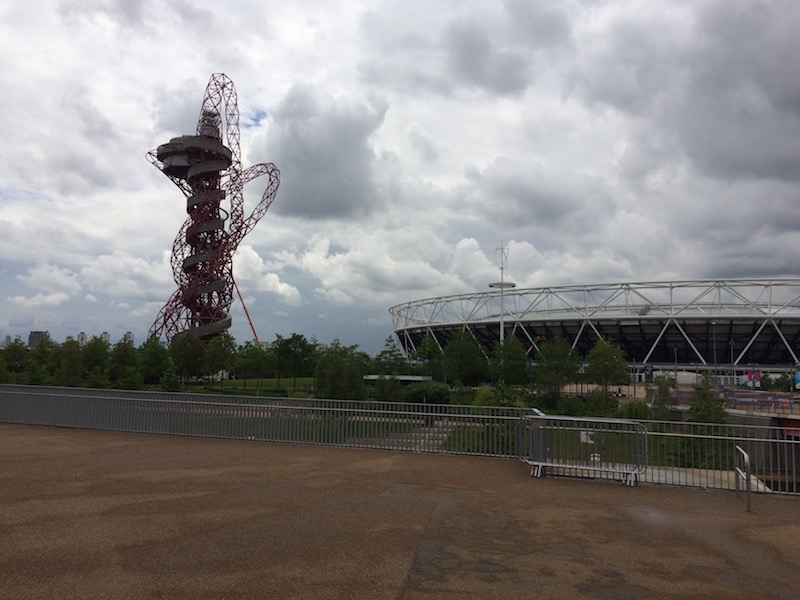
Fortunately, the Bar & Kitchen at the Podium is pretty quiet as I’m playing guess the person I’m meeting again. Introductions over we discuss the first steps in developing a location-aware legacy app for West Ham Utd, heralded from their move from the Bloeyn Ground (Upton Park) to the Olympic Stadium. The app will contain oral reminiscences and old photographs attached to features around both grounds and the Greenway which links the two. Look out for it next easter.
With my second meeting concluded it is back to the Central Line. The Olympic Stadium is currently undergoing its West Ham transformation and it makes my journey a little tricky, especially as its raining profusely. Roads are flooded, the traffic noise is really loud and drivers are angry. A elderly woman walking towards me throws some litter onto the street. I’ve also realised my trainers are no longer waterproof. This doesn’t bode well.

I quick foot it to Mile End and cut through Mile End Park to reach the canal. Peace! Reaching Bethnal Green means I’m a stone’s throw from the V&A Museum of Childhood. At the moment they have a Clangers, Bagpuss and Co exhibition which is fab. You can even have a go at creating your own Ivor the Engine stop motion animation. My favourite facts were:
- Ivor’s valley includes the town of Llanmad, which was inspired by Dylan Thomas’ Llareggub. Read them both backwards.
- Bagpuss was meant to be orange but the fabric shop delivered pink. It was purr-fect!
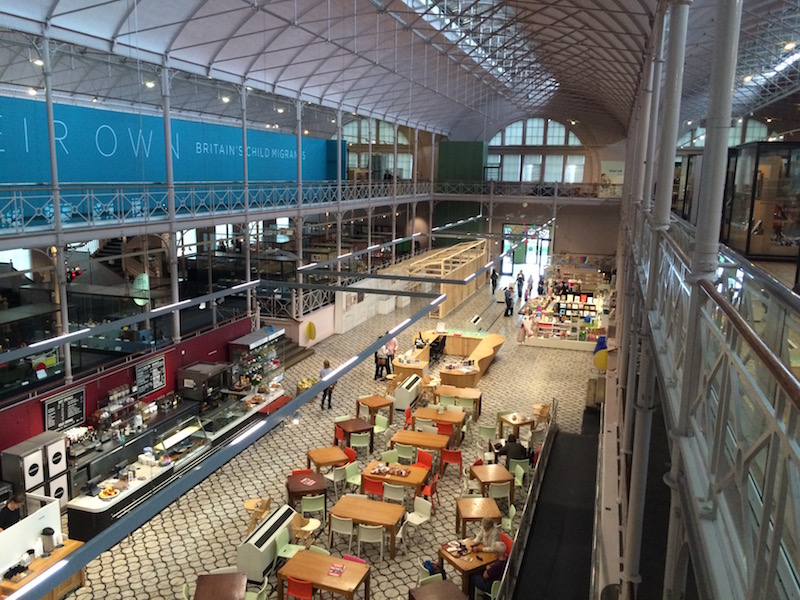
The museum wasn’t initially focused on childhood. It was only in the 1920s that the Officer-in-charge began to remand paintings at children’s eye level. As a result children’s visits and activities became an important educational part of the museum. It was at this point he started to develop a childhood collection with the help of generous donors, including Queen Mary.
The permanent exhibitions are brilliant. There are even toys from last year making it relevant to everyone. Sticklebricks, He-man, Astro Wars are just a few things that I haven’t seen for some time. Two things, at opposite ends of the spectrum, catch my eye:

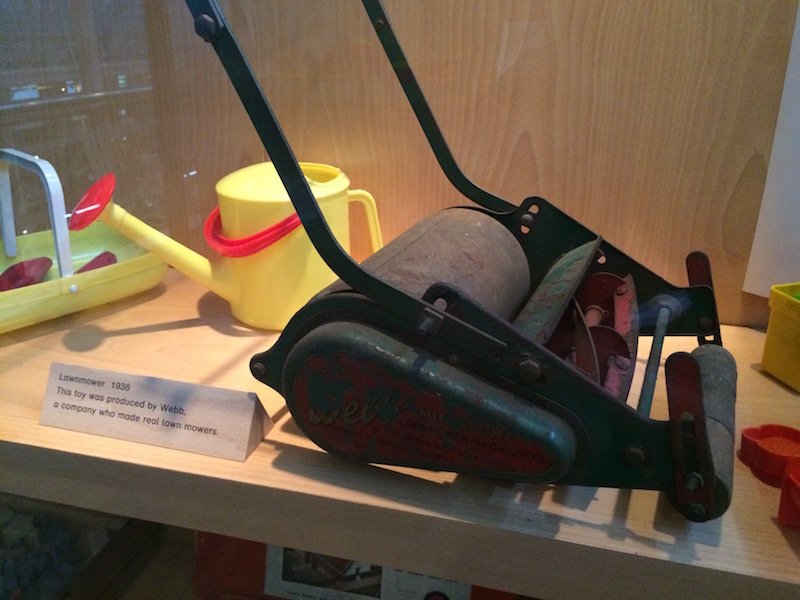
My central line walk is taking something of a diversion now. I have arranged an evening with old friends, and the use of their comfy sofa for the night. Heading to Hackney, I pass York Hall which is promoting ‘Chessboxing’. Apparently competitors fight in alternating rounds of chess and boxing; sounds rather intriguing!
Its Euro16 and we watch the second half of the Ireland game before heading to a wonderful Traditional Argentine Grill – Buen Ayre – on the ‘hipster’ Broadway Market. My sirloin steak steaks with a simple garnish is perfect!
Claire and Mark both need to leave early in the morning so that means I am up and on my way before 7, which is perfect. I’m heading straight for Spitalfields and more specifically the ‘Worst Street in London’, as claimed by Fiona Rule. This book charts the history of this area. Immigrant Huguenots came to settle here in the late 17th century and it became a bustling centre of the silk weaving industry. Fournier Street still contains many good examples of the 18th century weavers homes. No 14 is reputedly where the silk for Queen Victoria’s wedding dress was woven.
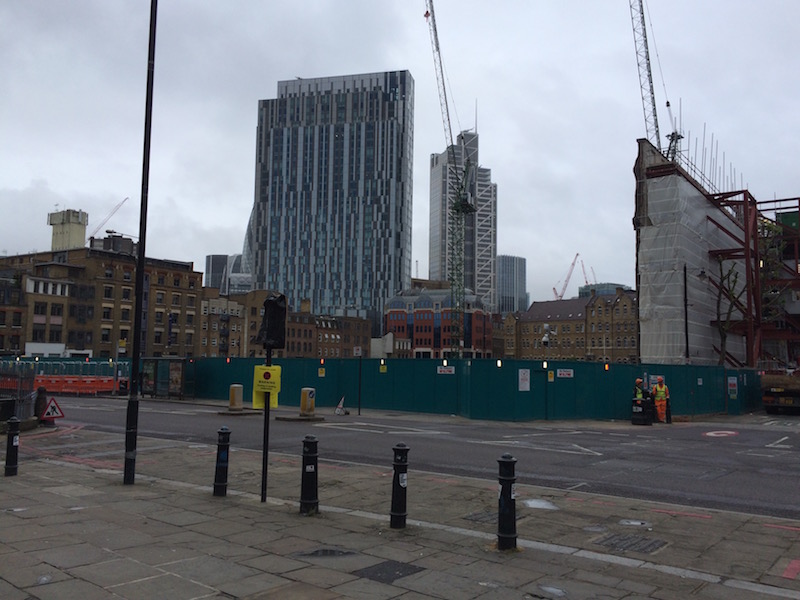
However, the area declined thereafter and slipped to the depths of depravity, violence. It is synonymous with the Jack the Ripper murders. But the book focusses on one thoroughfare – Dorset Street. The houses and the road itself (directly north of White’s Row) are no longer there – the site is once again undergoing redevelopment, but its legacy is too powerful to be completely erased
‘The Worst Street in London’ is a brilliant book that gives poverty and squalor a human face. It describes in great detail the players who made profit from the dire lodging houses that attracted the lowest of the low. Today Spitalfields is a vibrant and fashionable place to live, but having read the book I always wonder what is lying in the shadows.
I head along Bishopsgate towards Liverpool Street station. It opened in 1874, replacing the old Bishopsgate Station, and occupied a site where the Hospital of St Mary Bethlehem – Britain’s first psychiatric asylum – once stood. The chaotic and sometimes disturbing scenes witnessed by visitors to the hospital (yes, it took paying visitors) gave rise to the use of the word ‘Bedlam’ (a corruption of Bethlehem) to describe an uproarious scene.
Now it is on to Bank. ‘Spend a penny’ comes from a poem penned for the opening of Britain’s first municipal toilets, which stood outside the Royal Exchange. Today, there is four-sided panel here with photos of Verdun and other WWI battle sites. It promotes the ‘Fields of Battle, Lands of the Somme’ temporary exhibition, which stands outside the 15th century Guildhall. As its pretty much on the way it would be nonsensical to not visit.
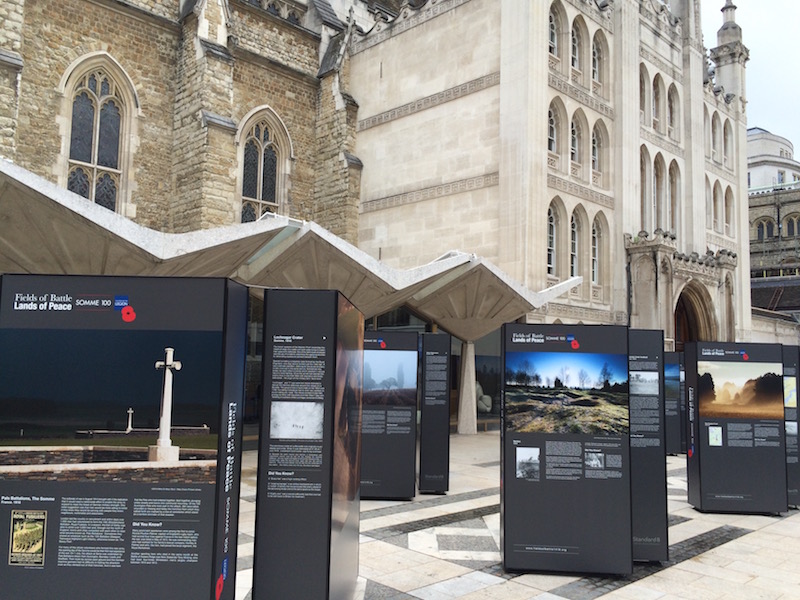
The imagery and text is incredibly moving. Plenty of people are slowly moving between exhibition laid out on the pavement. There’s probably too many words for my liking, but the Somme is a BIG story. If I was local I’d definitely come back to it again. The text tactfully covers everything from armaments to trench foot. After reading this, my wet feet don’t seem nearly so bad now. One of the panels explains that troops in India used to call lice ‘chats’. As they sat around talking and picking the lice out of their clothing they were said to be ‘chatting’, which is how the word entered our language.
I rejoin Cheapside – ‘chepe’ means market’ and reach St Paul’s. The rain is coming hard again. I’m taking another detour, this time to the Museum of London via Postman’s Park, so named due to its popularity as a lunchtime garden for workers from the nearby old General Post Office. It is home to the Watts memorial, built in 1900 by Victorian painter and philanthropist GF Watts. It commemorates heroic acts by everyday man and women who have given their lives attempting to save others. Between the greenery I also spot gravestones; the park was originally a graveyard. In late spring the Handkerchief tree found here is in full bloom. Its flowers apparently resemble pocket handkerchiefs!

I haven’t got time to explore the Museum of London fully so I make a beeline for a temporary exhibition near the entrance. It’s displaying the shortlisted entries for the museum’s new site at Smithfield Market, which currently lies empty. The Victorian buildings were cutting edge at the time and incorporate some of the first underground railway lines ever built. It will offer the museum a third more space.
I quickly saunter around some of the museum’s other exhibitions and watch a great animation about the history of London’s wall, as I look down on a remaining section.

There has been a market at Smithfield for over 1000 years. Livestock from all corners of the UK were brought there along ‘drovers’ roads’ – we’ve covered this in several projects including our Wild Wales app. By the mid 1800s a quarter of a million cattle and half a million sheep were sold at Smithfield each year. After the introduction of the railways, carcasses instead of live animals were brought here.
Next to the market I spot a plaque. It was here that William ‘Braveheart’ Wallace was executed in 1305. Close by is West Smithfield garden. Here, jousts, tournaments and executions were known to have taken place. Hundreds of religious martyrs were also burned in the 16th century and that leads me to my next stop: St Etheldreda’s on Ely Place. According to their website this is the oldest Roman Catholic chapel in Britain. I see they have an audio tour narrated by ITV News presenter Julie Etchingham. The 7 minute audio is brilliant; guiding you in through the ‘sticky’ door to explore the inside. I probably wouldn’t haven’t gone in without it.
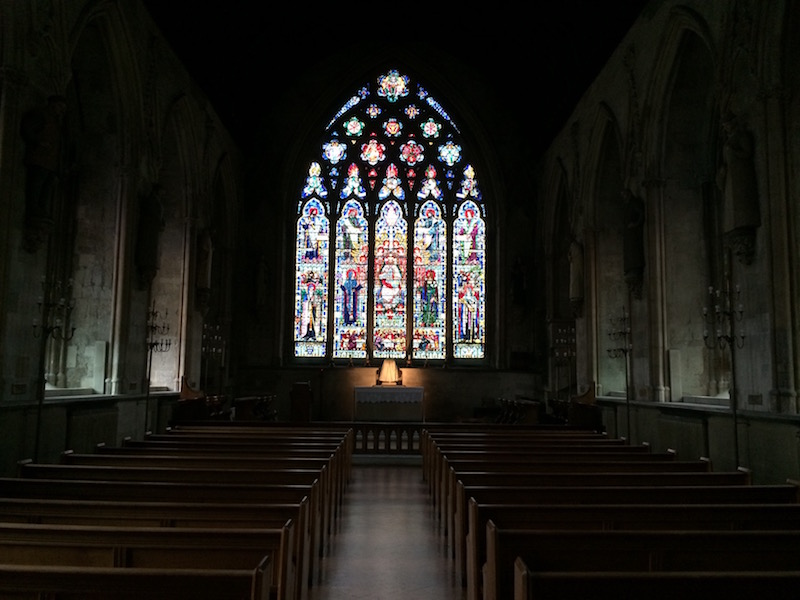
After Chancery Lane it is a visit to Sir John Soane’s museum. I’m not usually a museum guide book buyer but I’m glad I bought this one. The museum is wonderful. He bequeathed his home to the nation, stipulating that it be kept ‘as nearly as possible in the state in which he shall leave it’. It is filled with his exceptional collection of famous artworks, sculptures, furniture and artefacts. Sizeable pieces of architectural fragments can be found inside and outside the building.
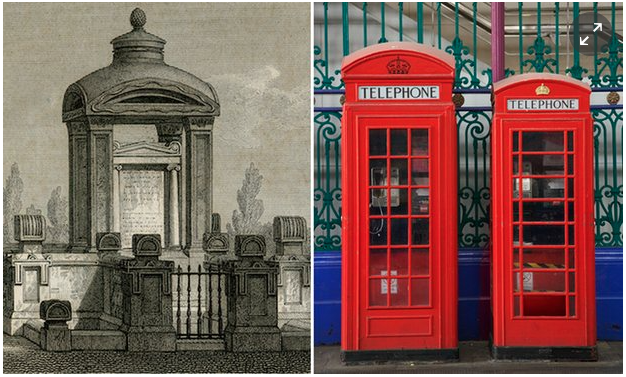
In the first room I find a model of the tomb built for Mrs Soane after her death in 1815. It was the inspiration for the iconic red telephone box designed in the 1920s. The tiny Picture Room contains hinged screens that reveal 118 paintings. Not just any paintings. There are three Venetian scenes by Canaletto, several William Hogarths and a JW Turner. The Sepulchral Chamber contains the amazing sarcophagus of King Seti I, one of the most important Egyptian antiquities ever to be discovered. Soane bought it for £2000, a fee the British Museum refused to pay.
Soane arranged his collections as ‘studies for my mind’ and he established the museum so students of architecture could study the classical principles of design, which he felt should be the foundations of their education. Sir John Soane, architect for the Bank of England, Dulwich Picture Gallery and numerous country houses, has now been added to my list of inspirational people.
With Hogarth fresh in my mind I pass Holborn Station. The area north of High Holborn used to be known as St Giles Rookery, another iconic slum in nineteenth century London. Many of Hogarth’s prints depict the poor of St Giles. His Harlot’s Progress is set in Drury Lane; Tom Nero in the Four Stages of Cruelty is a St Giles’ charity boy shown tormenting a dog near the church; Gin Street is set in the parish; and his Idle Apprentice is taken up for robbery and murder in a cellar in St Giles.
Its raining again so I take refuge in St Giles in the Fields. The history of the church and the surrounding area on their website is excellent. Locals have suffered severely at the hands of leprosy, the plague and cholera. By the eighteenth century, damp had caused severe damage to the church – probably caused by the thousands of plague victims being buried in pits in the graveyard!
By the time I had finished reading the website the latest shower had passed. I head up Denmark Street, packed with guitar shops and arrive at the Photographer’s Gallery before 12, which means I get free entry. Yay! The small exhibition spaces are spread over several floors. It is Erik Kessels’ ‘Unfinished Father’ that catches my eye. Kessels is known for his experimental use of found photographs and collections that he sources from flea markets etc, which he then gives new significance. This exhibition is no different, but it is of a profoundly personal nature.

His father was a passionate restorer of classic cars, in particular the Fiat 500 or ‘Topolino’. Whilst working on his fifth car he had a debilitating stroke, which means he can barely speak or move. The car is the centre piece of the exhibition along with photographs of car parts. Erik Kessels says, “Like my relationship with my father, this car will remain forever unfinished.”
At Tottenham Court Road, the Crossrail developments are making their impact felt above ground as well as below it.
I’m now heading north to cross Oxford Street, spotting a very ornate cornice on the corner of H&M on my way to All Saints Anglican Church on Margaret Street. It’s true external beauty is only noticeable once you stand in front of it, as its neighbouring buildings butt right up to the street. Sir John Betjeman, the poet, writer and enthusiastic advocate of heritage and architecture said, “It was here, in the 1850s, that the revolution in architecture began…It led the way, All Saints Margaret Street, in church building.” Simon Thurley, head of English Heritage, agrees. He named it as one of the ten buildings that have changed the face of Britain.

The interior is a wonder too. But I am not alone. There are 6 men asleep across chairs at the back of the church. The noise of nearby building work sounds like their exaggerated snores. As I get up to leave two more men come in and set up camp.

In Brook Street I come across a pair of blue-plaqued houses, lived in by two very different music composers: Handel lived in one during the 18th century; Jimi Hendrix lived in the other in 1969. I head up South Moulton Street, which falls under my category of ‘posh shops’. Ladies stand outside trying to give away samples, their ‘madam’s’ falling mainly on deaf ears.
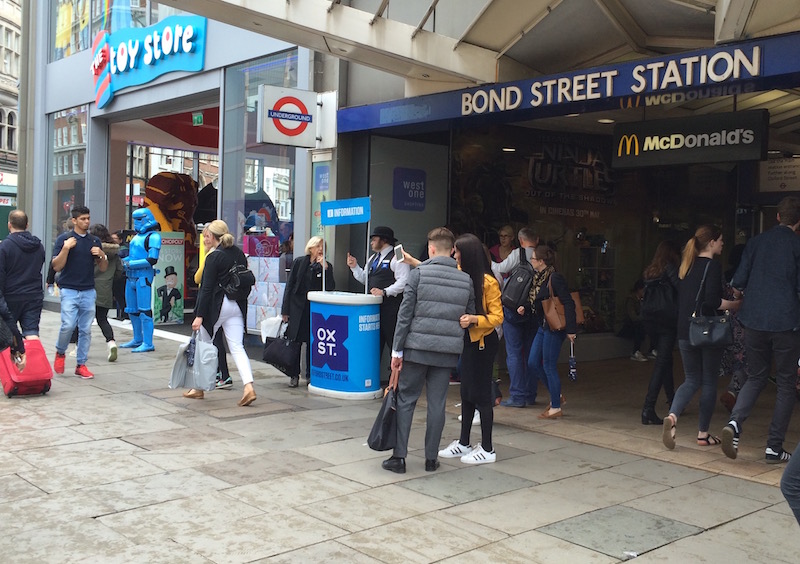
I pass a blue stormtrooper standing outside ‘The Toy Store’ next to Bond Street station (not on the Central Line). Perhaps his new blue pants went in with the white wash? I’m onto James Street now and a little Italian Restaurant – Osteria Ambrosia – feeds and waters me whilst I rest my legs and shrivelling feet. According to the menu an Osteria in Italy was originally a place serving wine and simple food. Both were lovely.
The sun has finally come out and as I stroll along Christopher Place with its outdoor eating I feel like I’m in the south of France. That is until I spot Mrs Kibble’s olde sweet shop and I’m brought back to blighty with a bang!
On my way to the Wallace Collection I spot a house with a double blue plaque – always a bonus. The Wallace Collection is very extravagant, with lots of gold. I found my appreciation of the treasured items on display was enhanced after stumbling across a very interesting temporary exhibition about marquetry and parquetry – painting with wood. It seems a shame to have this buried in the basement as it really makes you appreciate the workmanship.
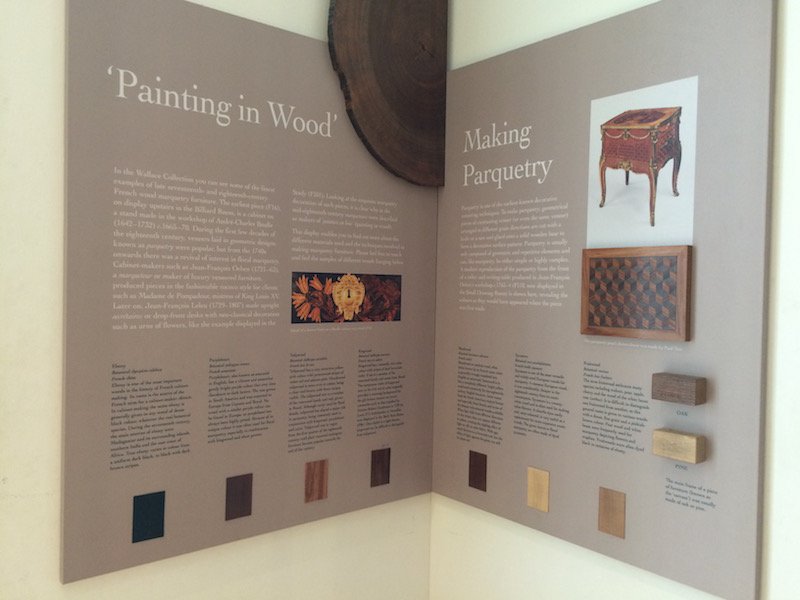
There are a lot of paintings on display and I think I’m having an after dinner bout of tiredness/laziness as I can’t be bothered to pick up the printed guides to lear about them. Some additional interpretation by selected paintings/artefacts would have been nice. As I leave the building, the electric doors remind me of the theme tune to Radio 4’s News Quiz (as it did when I arrived), which makes me chuckle.
It’s raining once again and this time it means business. The pavement is bubbling with the onslaught of heavy raindrops and people are cowering in shop doorways and under any available overhands. It’s not just me taking photos of the rain! Marble Arch station provides more substantial protection and the facial expression of the woman walking down the steps behind me confirms that this is no ordinary rain shower.
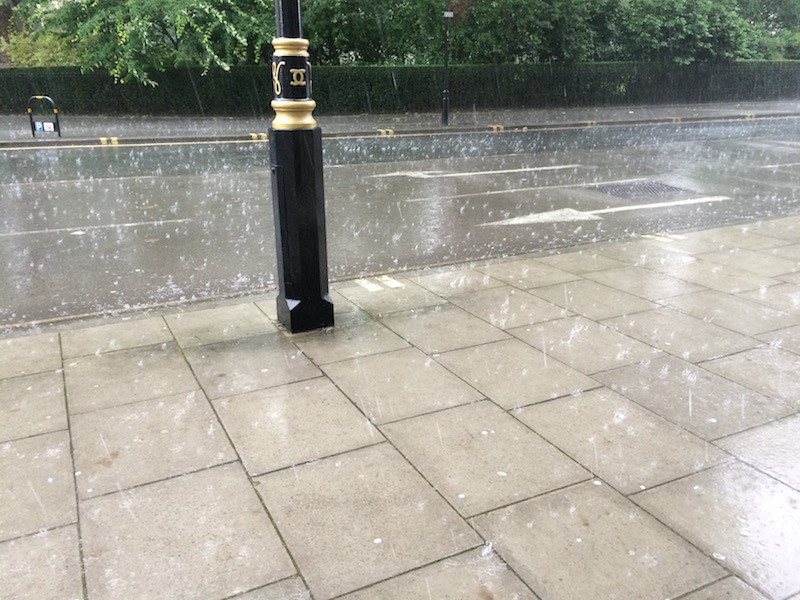
On the traffic island at the junction of Edgware Road and Bayswater Road near Marble Arch, lies a small plaque. It marks the spot where gallows were thought to have stood. The gallows were known as Tyburn Tree but were replaced by moveable gallows when a toll house was built on the site. The executed people were buried at St Giles in the Fields, including the Earl of Derwentwater, one of the commanders of the 1715 Jacobite rebellion and Claude Duval the notorious highwayman.
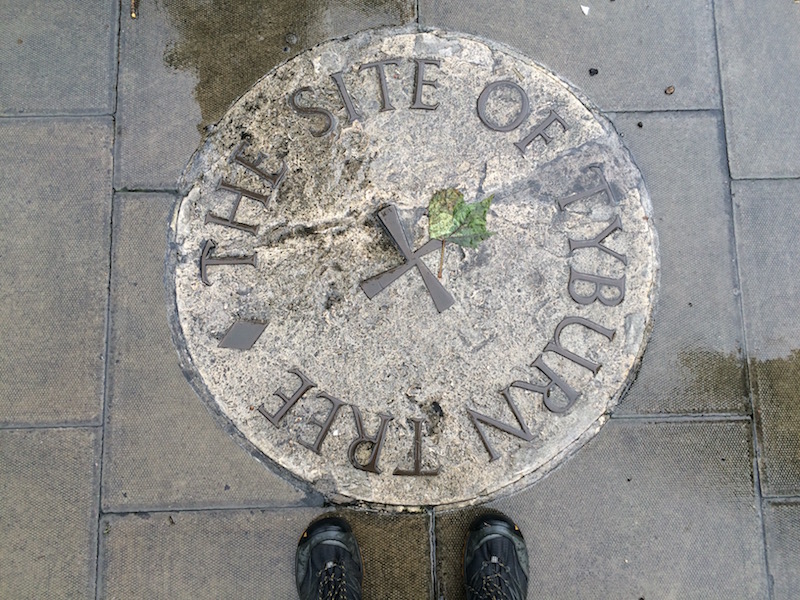
The rain has eased off but rivers are still forming along the kerbstones. Cars and buses throw up small waves onto the pavement, and unsuspecting pedestrians. I had considered calling it a day here but being stubborn and liking a bit of symmetry I want to complete the the walk through zones 1 and 2 of the underground. Clare also told me a great fact last night about White City so I want to plough on. I get my head down and march past Lancaster Gate, Queensway and Notting Hill Gate. Holland Park is closed for lift refurbishment. I have sympathy for those men who endured trench foot. After just a few hours my feet are sore from the capillary action of my shoes pumping more and more water into my socks. Although I have no whale oil to alleviate the issue, at least I have a dry house to go home to tonight.
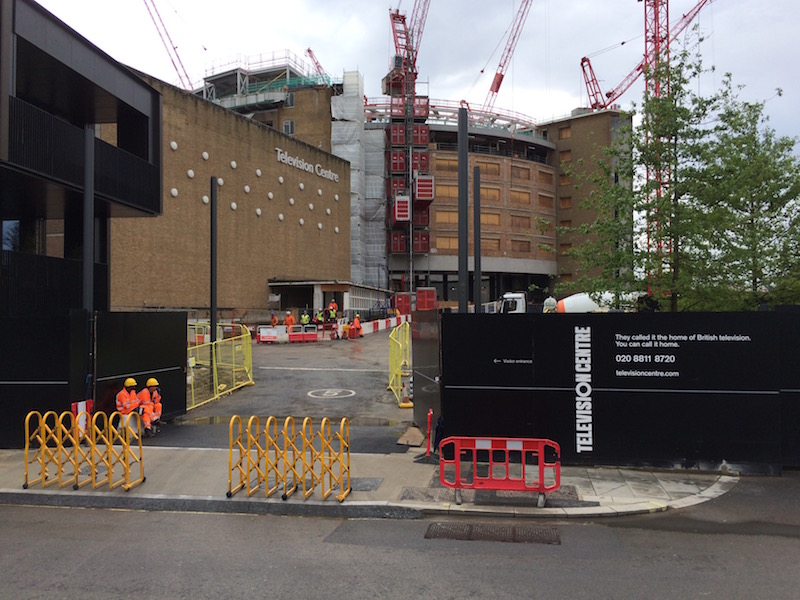
White City was home to the 1908 Olympics, before it became the BBC Television Centre site – which once again being redeveloped. Britain won gold for the tug-of-war that year. As the event was dropped after that we are effectively still the reigning champions, but that is not my new fact. The marathon wasn’t always 26.2 miles; indeed the original distance form the legendary Battle of Marathon to Athens was just 24 miles. The first Olympic marathon, in 1896, was 40km (24.8 miles) and from then on it varied. The recognised distance of 26.2 can be attributed to the 1908 Olympics. The course had been measured at exactly 26 miles from a start just outside the gates of Windsor castle to the White City Stadium. King Edward was due to start the race but because of a heavy cold his doctor advised him not to leave the castle. As a result the start was moved inside the grounds so His Majesty could start the race from his bed in a doorway. However, the finishing line had to stay where it was because it was perfectly in line with the Royal Box, where his wife Queen Alexandra would be sitting. Despite the success of that first race, it took 13 more years of arguing before the International Amateur Athletic Federation (IAAF) adopted the 1908 distance as the official marathon.
And that means my (half) marathon (13 miles) is over. There is no Queen, fanfare or even a finishing line to signal this, just the realisation that I need to head back to Wood Lane station to catch the tube back to King’s Cross. Despite the rain it has been fun. Which line next?
Thank you to Sarah Ciacci, who is among other things a Blue Badge Tourist Guide for London specialising in Art, Museums and Galleries, for suggesting many of the points of interest on this trail.

1 thought on “Walking the Central Line”
Comments are closed.